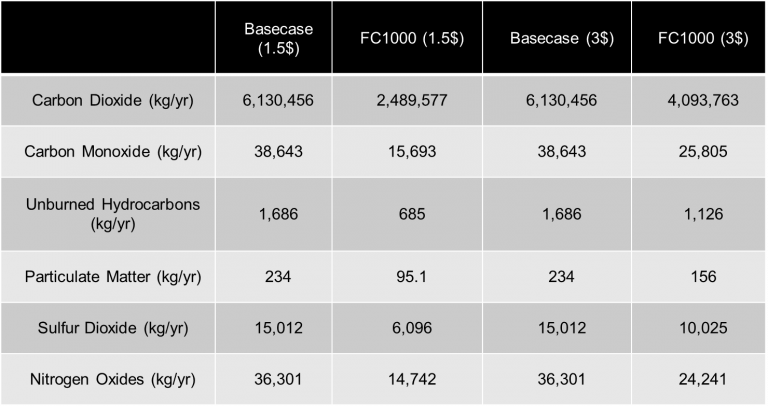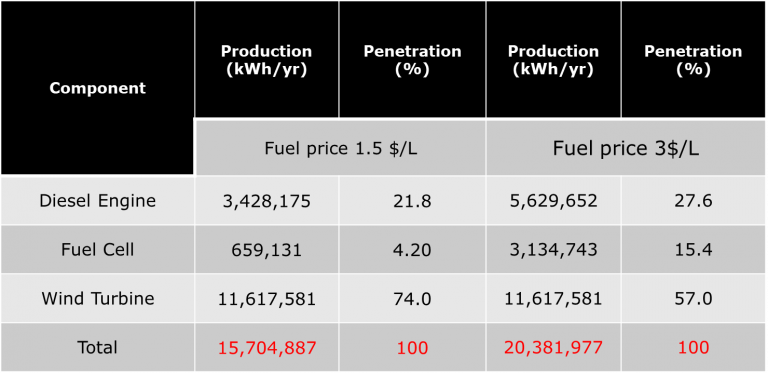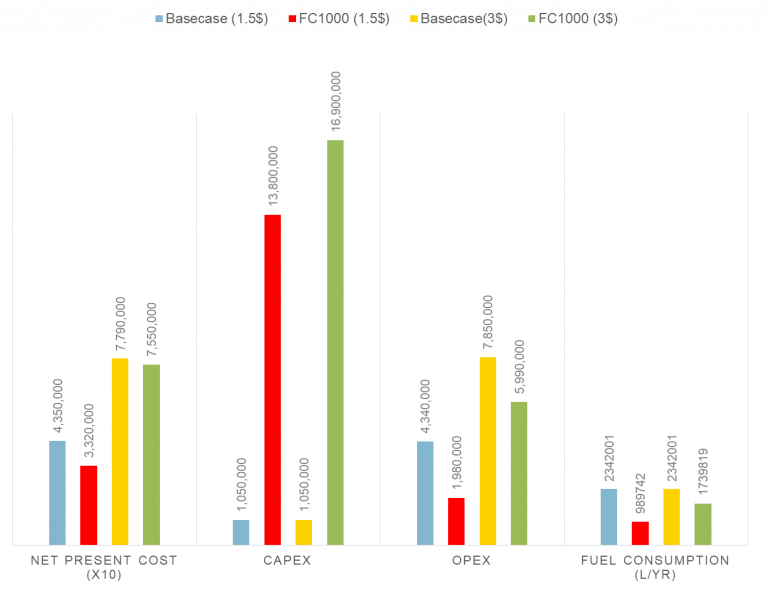Umer Farooq | MEL Candidate | Dec 17, 2021.
Mentor: Ram Ramanan, Bloom Energy;
Abstract
The mining industry accounts for 10% of the world’s energy consumption, equivalent to the total energy consumed by Australia, Mexico, South Korea, Italy and Canada collectively. Most of this energy comes from burning diesel and other fossil fuels, unarguably the biggest source of CO2 emissions. Remote mining operations in Canada are heavily dependant on diesel as fuel for electricity, Heavy & bulk trucks and thermal load.
For the capstone project, I am doing a techno-economic feasibility study for a Northern-Canadian mining site using Bloom Energy’s state-of-the-art Solid Oxide Fuel Cell technology, replacing the diesel engine with renewable-multi-storage (Wind Turbine, Electrolyzer, Hydrogen & Battery, Fuel Cell) solution. The results will reveal technical benefits, cost savings and reduction in GHG emissions from switching to a renewable energy source.
Introduction
Canada has the biggest mining operation in the world, there is a total of 200 active mining sites in Canada. 32 of these sites are off-grid and rely on diesel fuel to meet their electricity, haulage and thermal energy requirements. The Canadian mining industry contributes $109 billion (5%) to Canadian GDP, hosts 720,000 Jobs, and adds 50% of industrial GHG emissions every year. Given its heavy dependency on fossil fuels, any substantial reduction of carbon footprint requires significant changes in energy production schemes and overall policy framework. Implementation of green technology such as, Solar PV, Wind Turbine and Fuel Cells can facilitate a move towards carbon-free mining. Following the successful deployment of renewable energy in other industries, the mining sector is considered as a potential playing field for renewable application with several studies justifying its feasibility.
Although renewable play in the mining space is still at the early stages, a list of successful projects has been reported in the literature
- In the Diavik diamond mine in the northwest region, 4X ENERCON wind turbines offset 10% of diesel consumption and reduce carbon dioxide emissions by 6%.
- The Raglan nickel mine in northern Quebec, Arctic Rating ENERCON wind turbines, equipped with lithium-ion batteries, electrolyzers and fuel cells displaced 3.4 million litres of diesel and 9 thousand tons of greenhouse gases gases over 18 months
- Located at the Koodaideri mine in Pilbara, Australia. Rio Tinto is building a 34 MW photovoltaic solar farm that can meet 65% of the mine’s electricity demand.
Methodology
.This study evaluates the techno-economic of substituting a 2MW modular diesel-based power generation block with its decarbonized alternatives. Please note that the energy mix used in this study is based on mining operations in the Northern Territory of Canada that are classified as cold climate mines. Hence, this result applies to other mining operations with similar conditions.

Results and Discussion
HOMER software was configured with different technology components such as Diesel Genset as a base-case and renewables such as Wind Turbine, Electrolyzer, Fuel Cell, and EBS as alternative energy sources. Homer simulates all possible configuration models considering different fuel prices and emission penalties. Results indicate higher penetration of Wind Turbine, whereas fuel cell contribution peaking at 15%. Diesel fuel and transportation add to the Operating Expenditure. Whereas upfront Capital cost is a concern for switching to renewables


Renewable energy generation requires significant capital investments. Project developers and mining operators/end users may not have sufficient cash on hand to fund the capital, which includes project assessment and feasibility, equipment purchases, and project construction. Thus, financing in the form of a bond, loan, lease or power purchase agreement is needed to amortize the costs over multiple years.
In addition, diesel power generation will be penalized through policies and financing bottlenecks, which will increase both costs of capital and O&M cost.

Conclusion
This study shows diesel fuel can be replaced by 80% decarbonized renewable energy for electricity generation. Upfront capital cost, fuel cell efficiency and carbon pricing are the limiting factors for achieving 100% renewable play. Future conversions such as diesel haulage to fuel cell transport and hydrogen fuel supply for a thermal load will justify on-site hydrogen production. A fuel cell can be used for CHP (Combined heat & power) with total system efficiency of 88% that completely offset GHG emissions, with lower Net Present Cost (NPC) and the Annualized cost of operation. If higher renewable penetration (especially Wind Turbine) is a concern for system stability, it is recommended to replace Diesel fuel with Natural Gas where possible, since NG Fuel Cell will offer higher system efficiency compared to IC Engines with much lower GHG emissions.
References
•Canada, N. R. (2020, Dec). HYDROGEN STRATEGY FOR CANADA. Retrieved from Seizing the Opportunities for Hydrogen: https://www.nrcan.gc.ca/sites/www.nrcan.gc.ca/files/environment/hydrogen/NRCan_Hydrogen-Strategy-Canada-na-en-v3.pdf
•A PLATFORM TO POWER THE FUTURE. (2021). Retrieved from Bloom Energy : https://www.bloomenergy.com
•Kalantari a, H., Sasmito b, A., & Ali G, S. (2021). An overview of directions for decarbonization of energy systems in cold climate remote mines. Elsevier.
Contact
Umer Farooq
Bloom Energy
Email: umerf001@student.ubc.ca
Phone: 7788293277
Website: www.bloomenergy.com